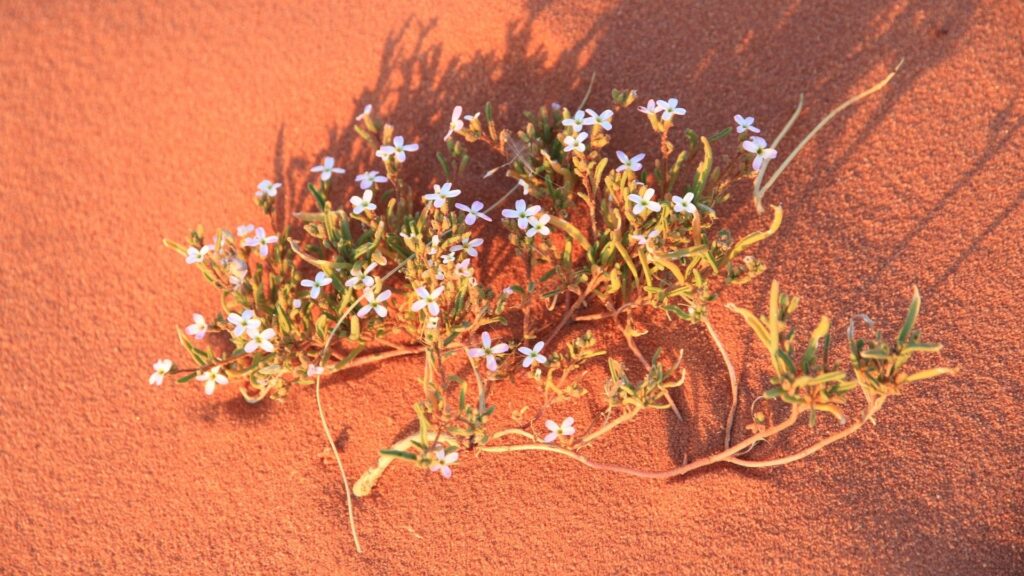
A Little Desert Flower Therapy Will Turn That Frown Upside Down
Flowers. Flowers are stunning, coming in a wide variety of hues and types. Many of us encounter them frequently without realizing their positive effects on our mental health. The incredible fragrance of certain flowers has long been known to put people to sleep and restore mental equilibrium. It’s a mood booster and stress buster.
Recent studies have shown that exposure to nature, including flowers and plants, can improve one’s mood and well-being. The point is, if you know how to make the most of your natural surroundings, just being there can-do wonders for your health.
In an arid country like the United Arab Emirates, it will be difficult to maintain such a setting. Although it seems implausible, it is indeed possible to have a flower oasis in a desert if you make the effort. Sirwiss has collaborated with professional gardeners, and these specialists know what types of alternative flowering plants you can have in your desert garden even if you are unable to grow lily-of-the-valley.
Continue reading to discover the effect flowers have on us and the best varieties of flowers for the desert.
Why Flowers Make Us Happy
Flowers will make you joyful by stimulating your brain’s chemical messengers. This is how they do it:
1. Dopamine
In the human brain, dopamine is produced when a person is looking forward to a reward. When a flower opens, dopamine is released, which makes you feel like something exciting is coming up. In the natural world where our brains formed, flowers were a big reward signal because they meant meals were coming after a long winter. For our hunter-gatherer ancestors, bright colors meant food that was good for them. They decided on a healthy diet by looking for specks of color.
2. Oxytocin
This substance is commonly known as the “bonding hormone.” Oxytocin induces a pleasant sense of social trust, whether in the context of romantic affection, maternal attachment, or group cohesion. We are all aware of how difficult it is to find and how readily it can be lost. We are therefore eager to find methods to stimulate it. Flowers.
3. Serotonin
Serotonin, the neurotransmitter responsible for the euphoric effects of several antidepressants, is released when a mammal’s social status improves, according to studies conducted on primates in the 20th century. This is something that flowers excel at. Whether you grow them, purchase them, or simply observe them, flowers can provide the confidence increase your mammalian brain has been waiting for.
No one enjoys admitting they care about their social status, but if your serotonin is not stimulated, you will feel wretched. Because of this, we are always searching for discreet methods to detonate it. Numerous cultural practices are designed to help us fulfill this need in a constructive manner. These ceremonies employ flowers. Flowers are a wonderful way to make someone feel special without causing them any harm.
Low-Maintenance Desert Flowers for Your Landscape
These resilient blooms have made their way from various deserts throughout the globe, making them well-suited to a wide range of environmental circumstances. Plenty of desert flowers may thrive alongside evergreen trees in a cool temperate area. The following flowers are ideal for those who live in arid regions and want to create the garden of their dreams.
1. Desert Willow Shrub (Chilopsis Linearis Lucretia Hamilton)
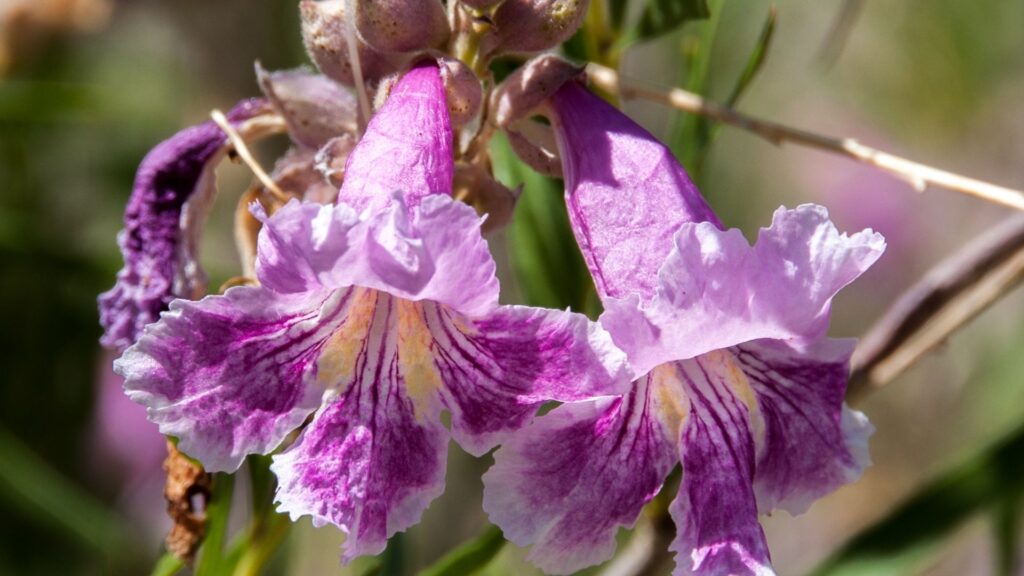
The desert willow may look like a member of the Salix genus of trees, but it is more closely linked to the Campsis family of trumpetcreeper flowers. The flowers of this cultivar are showier and brighter than those of the species, which are more subdued. Hummingbirds and butterflies will be drawn to your garden by the trumpet-shaped flowers.
- Symbolism: Welcoming friends, patient mercy, serenity
- Water needs: Dry to medium, tolerates drought
- Soil needs: Dry, slightly alkaline soil with good drainage
- Growing zones: 6 to 9
- Light needs: Full Sun
- Blooming season: May to June
2. Ice Plant (Delosperma Cooperi)
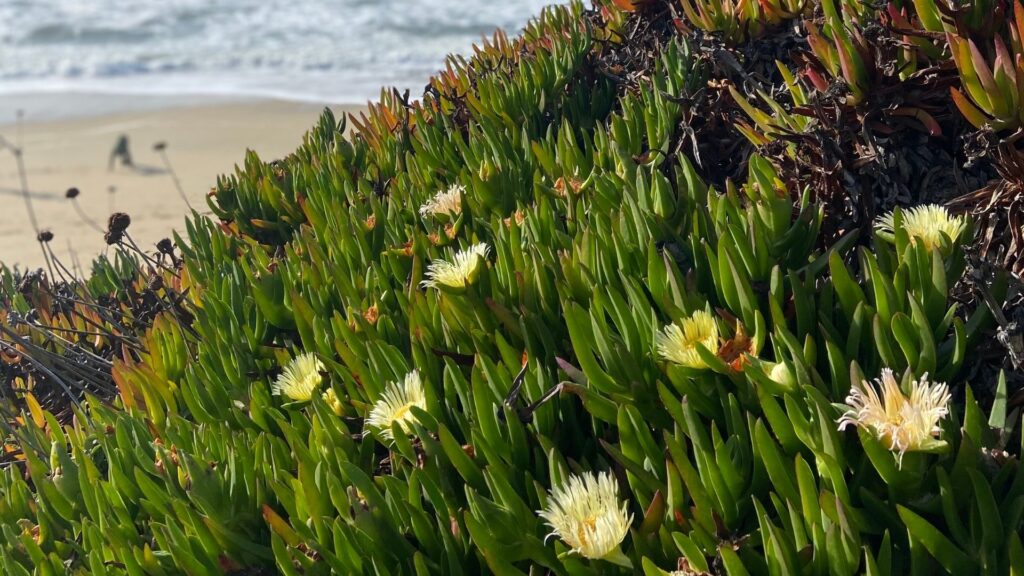
The ice plant, a mat-forming succulent, is ideal for use as a groundcover in the desert. The flowers are a striking blend of yellow and white, and the foliage has the textural appeal of a succulent. If yellow isn’t your thing, the ‘Jewel of the Desert’ line has plenty of other vibrant hues to choose from.
- Symbolism: Good luck, impassivity, knowing the future
- Water needs: Dry, tolerates drought
- Soil needs: Sandy soils with extremely good drainage
- Growing zones: 5 to 10
- Light needs: Full Sun
- Blooming season: June to September
3. Desert Rose (Adenium Obesum)
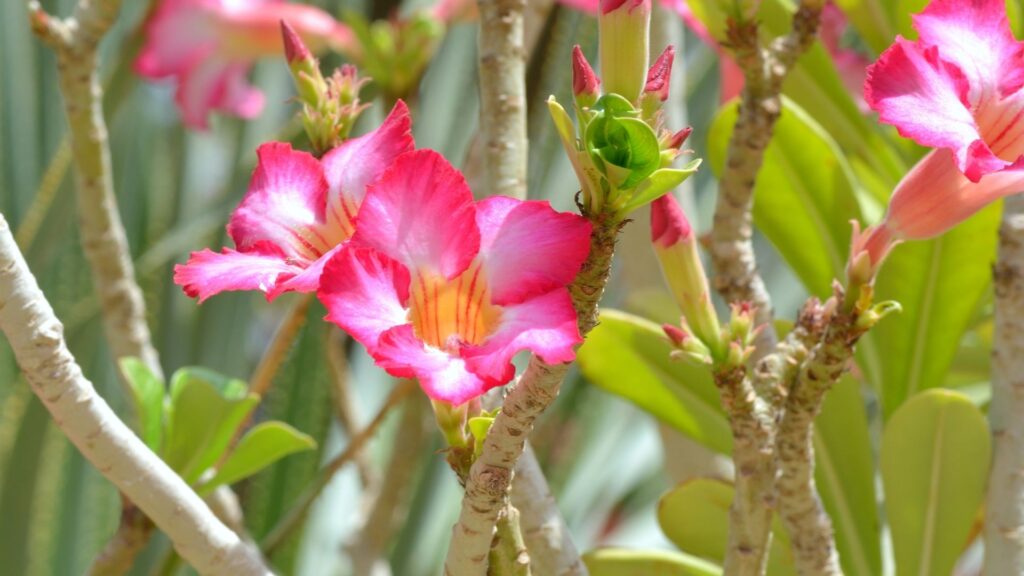
The first thing that strikes you about these desert flowers is their dazzling star-shaped petals. Desert roses, with blossoms ranging from red to pink, are ideal for providing summer color to your desert garden. Aside from its flower, this perennial succulent has a peculiar bulging stem that offers visual interest all year.
- Symbolism: Love, unfailing hope, quick victory, pure joy
- Water needs: Dry to medium, tolerates drought
- Soil needs: Sandy or gravelly soil with good drainage
- Growing zones: 11 to 12
- Light needs: Full Sun
- Blooming season: June to August
4. Red Aloe (Aloe Ferox)
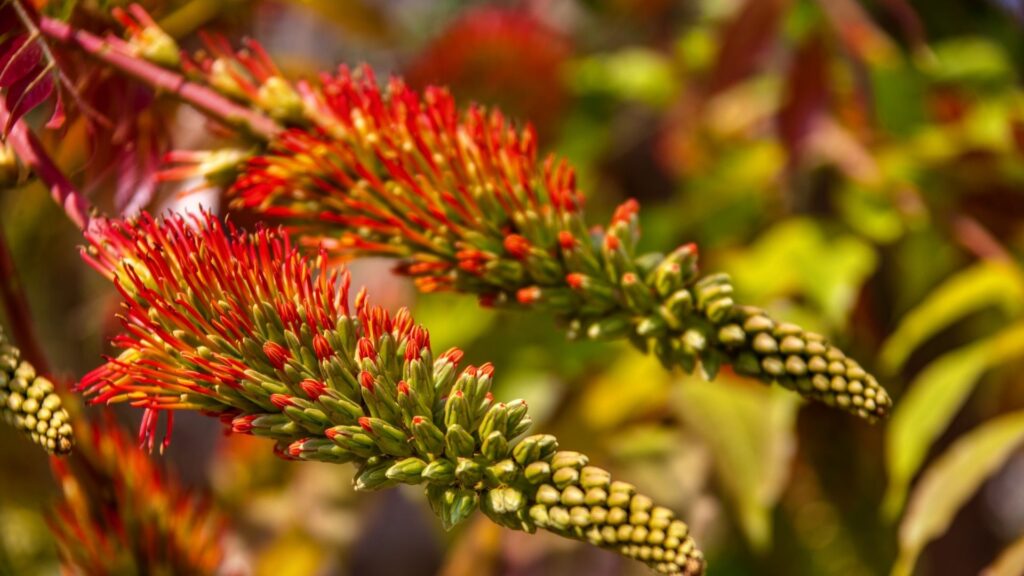
Unique tubular orange-red inflorescences and gorgeous blue-green foliage make red aloe a potential candidate for the focal point of a desert garden. These enchanting flower columns are at eye level because this type of aloe grows to a height of at least six feet. Depending on the amount of precipitation and the weather, these stunning flowers will open at different times.
- Symbolism: Healing grief, erasing sadness, purging pain
- Water needs: Dry, tolerates drought
- Soil needs: Sandy loam-type soil
- Growing zones: 9 to 12
- Light needs: Full Sun
- Blooming season: Blooms seasonally
5. Redflower False Yucca (Hesperaloe Parviflora)
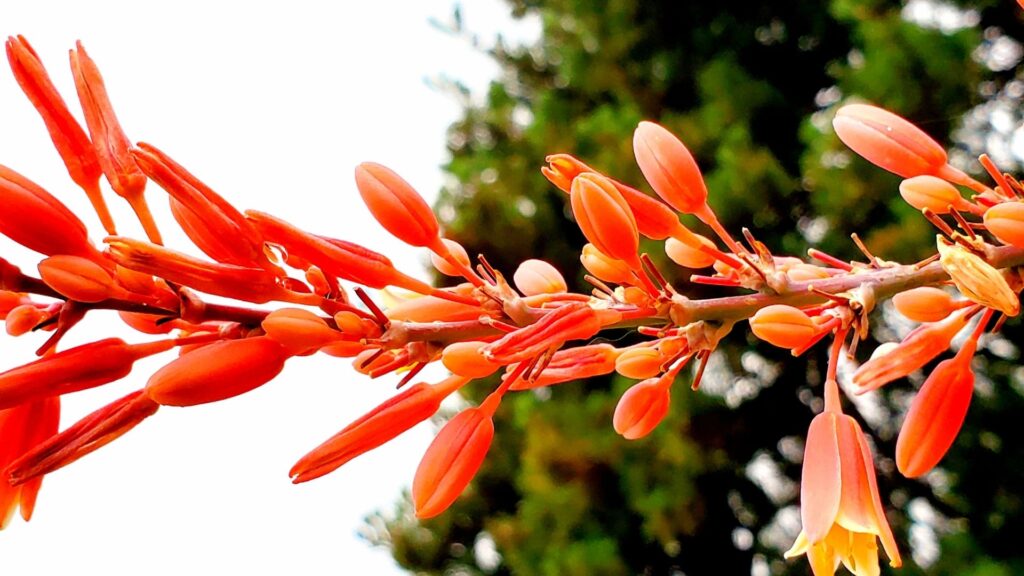
This North American bloom, originally from the Chihuahuan desert, is a surefire method to attract hummingbirds to your backyard. Each flowering stem bears trumpet-shaped blossoms in soft pinks and reds. The leaf develops a pleasant bronze iridescence in colder areas. Even the flower buds, as shown above, are lovely.
- Symbolism: Forever yours, evening fragrance, finding soothing in the new world
- Water needs: Dry, tolerates drought
- Soil needs: Sandy soils with excellent drainage
- Growing zones: 5 to 10
- Light needs: Full Sun
- Blooming season: July to August
6. Prickly-Pear (Opuntia Humifusa)
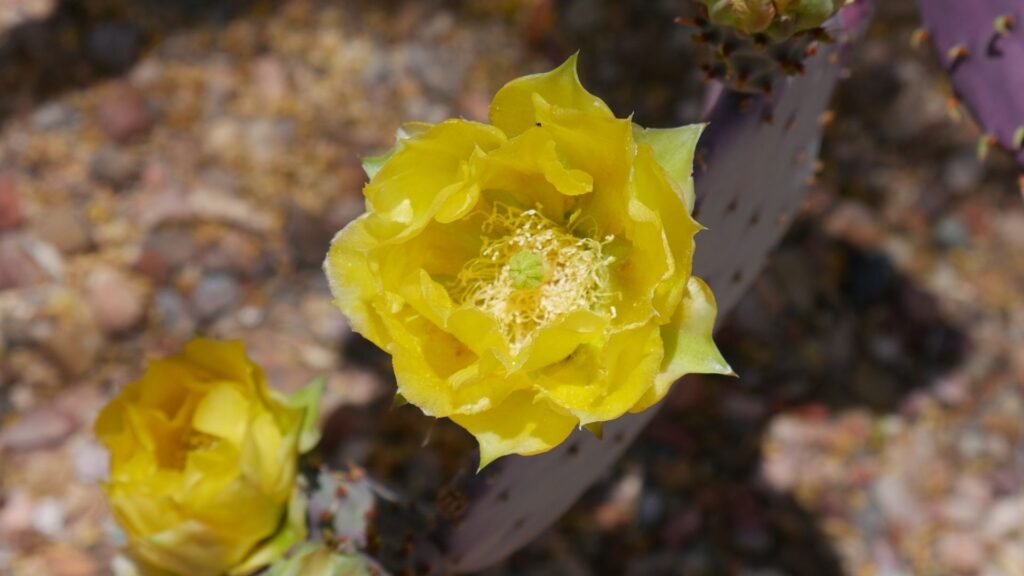
The Prickly-pear is a great addition to your garden if you love the bright yellow flowers of desert plants that sit atop thorny cacti. When paired with the unusual cactus foliage, the golden flowers that are shaped like cups really stand out. Cactus evergreen pads are attractive year-round.
- Symbolism: Humor, healing of wounds, clearing of the air
- Water needs: Dry, tolerates drought
- Soil needs: Sandy or gravelly soil with excellent drainage
- Growing zones: 4 to 9
- Light needs: Full Sun
- Blooming season: June to July
7. Hummingbird’s Trumpet (Zauschneria ‘Orange Carpet’)
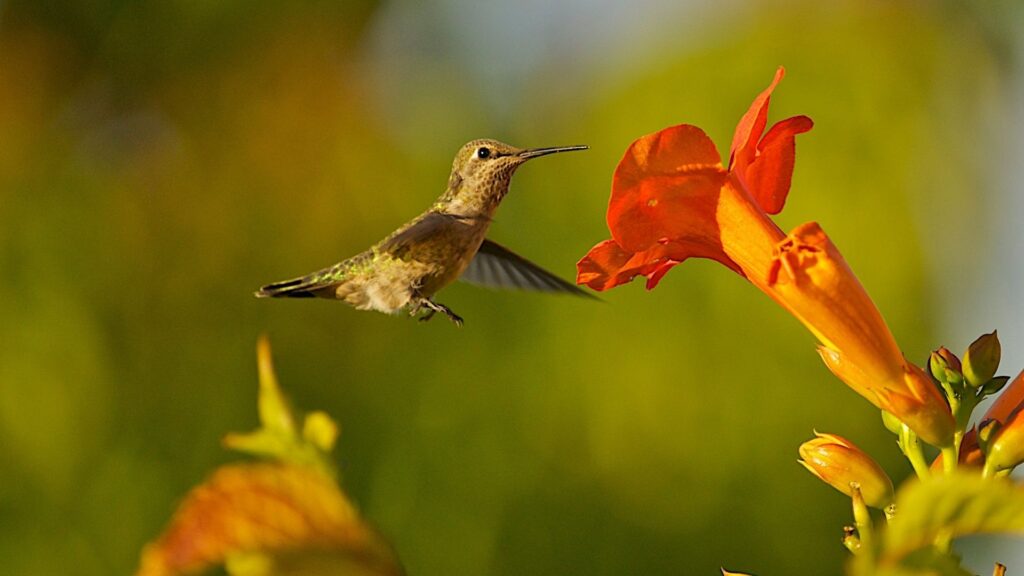
Hummingbird’s trumpet, a desert plant with long orange blossoms, provides year-round color from summer to October. It is a dwarf shrub that reaches a maximum height of 6 inches. Hummingbirds will still flock to your garden despite its diminutive stature. These blooms are ideally suited for xeriscape or rock gardens due to their rocky soil requirements.
- Symbolism: Trusting love, friendly watchfulness, frugality
- Water needs: Dry, tolerates drought
- Soil needs: Sandy or rocky soils with excellent drainage
- Growing zones: 5 to 9
- Light needs: Full Sun
- Blooming season: July to September
8. Texas Barometer Bush (Leucophyllum Frutescens)
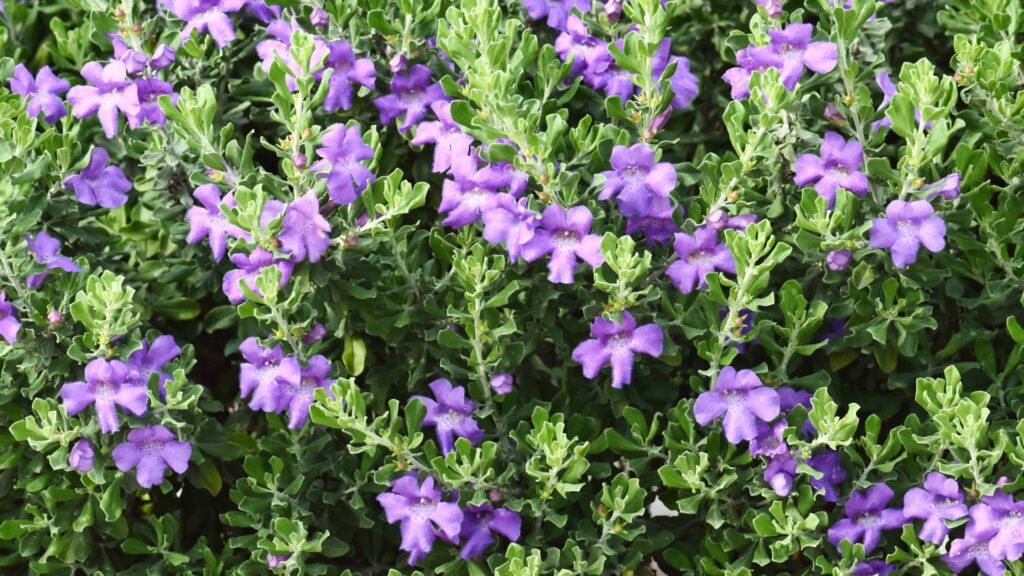
The Texas barometer shrub is a wonderful addition to any desert garden since its flowers bloom after any rain, regardless of the season. The foliage is a stunning silvery green, adding to the dramatic effect. Think of these desert flowers as a hedge while you peruse images of them online.
- Symbolism: Impending good fortune, best of luck, joyfulness
- Water needs: Dry to medium
- Soil needs: Gritty soil with excellent drainage
- Growing zones: 8 to 10
- Light needs: Full Sun
- Blooming season: After rainfall
9. Desert Marigold (Baileya Multiradiata)
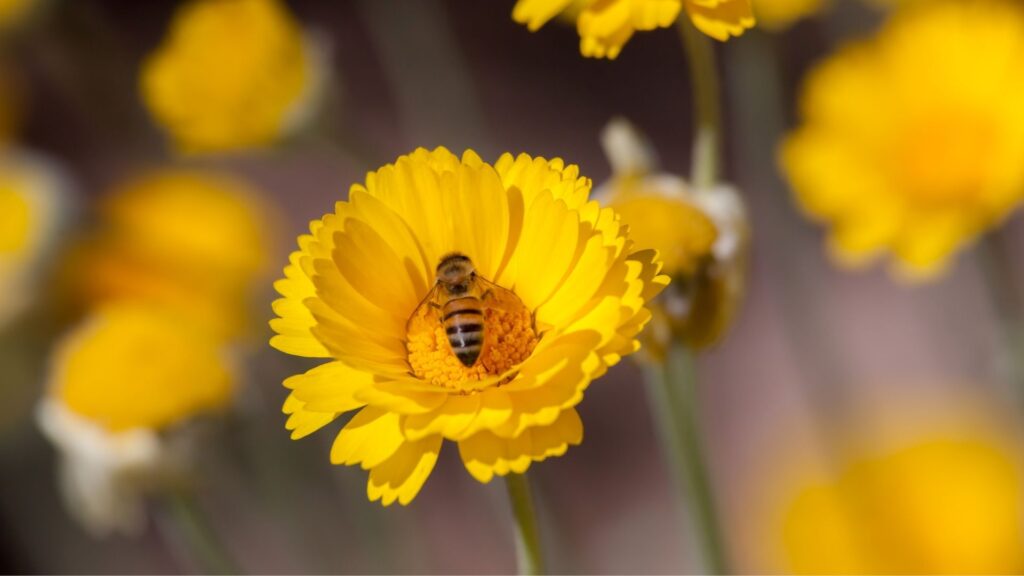
These desert flowers have a very lengthy flowering season and will bring splashes of golden color into your home. The flowers of the desert marigold bloom profusely from spring through winter, and the plants themselves form a neat mound. Desert marigolds are a reminder that even in the most unforgiving of settings, beauty can flourish.
- Symbolism: Obedience, sadness in hardship, thinking of you
- Water needs: Dry, tolerates drought
- Soil needs: Sandy soil with good drainage, tolerates a wide range of soils, tolerates poor soils
- Growing zones: 7 to 10
- Light needs: Part shade
- Blooming season: March to November
10. Livingstone Daisy (Dorotheanthus Bellidiformis ‘Mesbicla’ Mezoo Trailing Red)
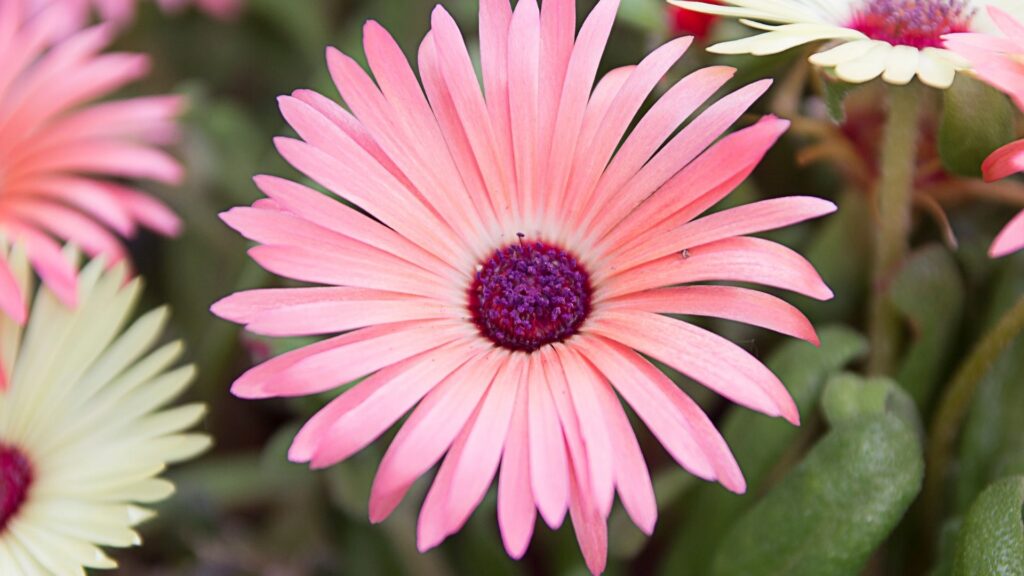
Livingstone daisies are native to large parts of Africa. They can cover the ground in your desert yard in a unique way. In pictures of these desert flowers, you can see daisies with many petals and bright colors. If you live in a cool area, you can grow this flower as an annual in the summer.
- Symbolism: Restful sleep, innocence, peaceful
- Water needs: Dry to medium
- Soil needs: Sandy or gravelly soil with good drainage
- Growing zones: 9 to 10
- Light needs: Full Sun
- Blooming season: June to October
11. Spanish Bayonet (Yucca Aloifolia)
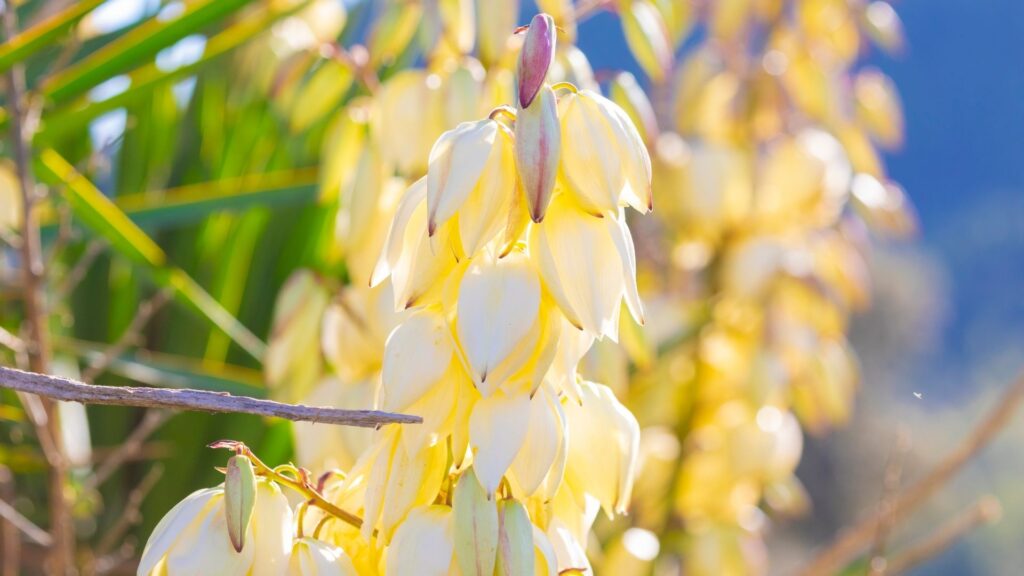
Considering the Spanish bayonet prefers sandy, low-fertility soils, the clusters of white bell-shaped blossoms appear implausibly luxuriant. The Spanish bayonet is a great choice if you want to add some white desert blooms to your xeriscape. However, the leaf of this plant can be sliced much like a sharp word.
- Symbolism: Sharp-tongued, forever yours, honesty
- Water needs: Dry to medium, tolerates drought
- Soil needs: Sandy soils with excellent drainage, tolerates poor soils
- Growing zones: 8 to 11
- Light needs: Full Sun
- Blooming season: June to September
12. Giant Hyssop (Agastache ‘Bolero’)
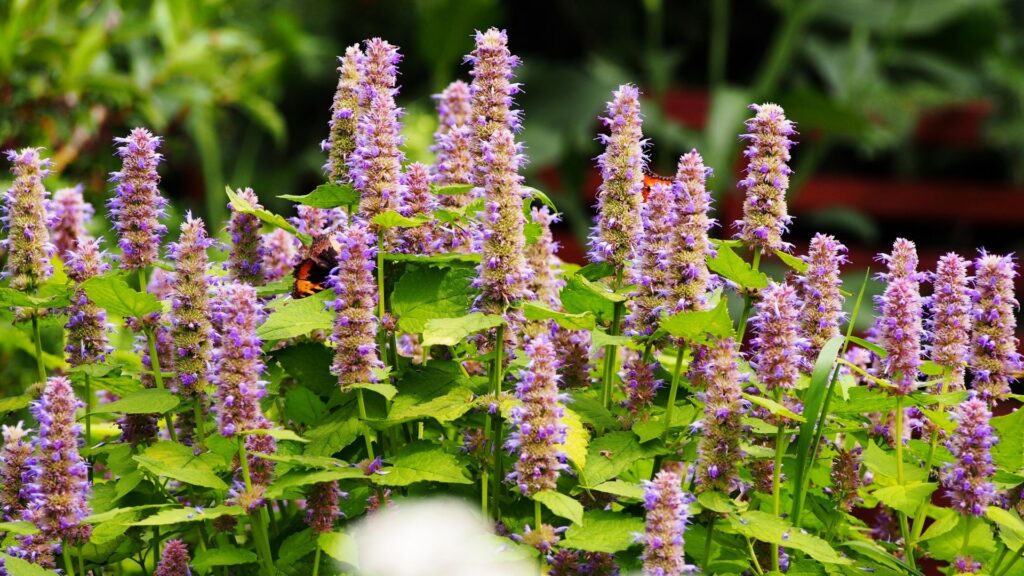
Giant hyssop’s purple columnar blossoms bring a whimsical touch to your low-water xeriscape garden. Although they are referred to as “giant,” these thorny blooms only grow to a height of 12-18 inches. The huge hyssop plant, whose name comes from the Greek word for “plenty,” is both an attractive landscape addition and a high-quality cut flower.
- Symbolism: Freshness, love of cleanliness, abundance
- Water needs: Low to medium
- Soil needs: Average soil with excellent drainage
- Growing zones: 5 to 9
- Light needs: Full Sun
- Blooming season: July to September
The energies of various blossoms eliminate negative emotions, as supported by scientific research. Despite your passion for flora, you may lack the time necessary to maintain a garden. If you are unsure of how to proceed with your gardening endeavor in the United Arab Emirates, you should contact a professional in the gardening industry.